

others
EUR/USD moves beyond mid-1.0800s after slightly stronger CPI prints from France and Spain – Crypto News
- EUR/USD attracts some follow-through buying on Thursday amid modest USD weakness.
- Reduced bets for an aggressive ECB policy easing underpin the Euro and also lend support.
- Traders now look to more inflation figures from Germany and the US for a fresh impetus.
The EUR/USD pair builds on the previous day’s goodish rebound from sub-1.0800 levels, or a one-week low and gains strong positive traction during the first half of the European session on Thursday. The momentum picks up pace following the release of inflation data from Spain and France, pushing spot prices beyond mid-1.0800s in the last hour. Traders, however, might opt to wait on the sidelines ahead of more inflation figures from Germany and the United States (US), which could help determine the timing of rate cuts by the European Central Bank (ECB) and the Federal Reserve (Fed).
In the meantime, reduced bets for rapid interest rate cuts by the European Central Bank (ECB) might continue to lend support to the shared currency and the EUR/USD pair. Apart from this, a modest US Dollar (USD) downtick turns out to be another factor contributing to the intraday positive move. It, however, remains to be seen if bulls can capitalize on the strength or opt to lighten their bets ahead of the key data risks. Moreover, growing acceptance that the Fed will keep interest rates higher for longer might further hold back bullish traders from placing fresh bets around the currency pair.
Daily digest market movers: EUR/USD gets a boost from warmer consumer inflation data from France and Spain
- The National Institute of Statistics and Economic Studies reported that the Consumer Price Index (CPI) in France rose 2.9% year-on-year in February as compared to the 3.4% previous and 3% expected.
- Meanwhile, the headline CPI in Spain decelerated from 3.4% in January to the 2.8% YoY rate during the reported month, though was still slightly above consensus estimates pointing to a reading of 2.7%.
- Retail Sales in Germany fell by 0.4% MoM in January, missing expectations for a 0.5% increase, and adding to concerns about the darkening outlook for the Eurozone’s biggest economy.
- Investors, however, seem relcutant ahead of the crucial inflation data from the Eurozone and the US on Thursday, which might keep a lid on any further appreciating move for the EUR/USD pair.
- ECB Governing Council member Peter Kazimir said on Wednesday that he would prefer the central bank to start cutting rates in June, followed by a smooth and steady cycle of policy easing.
- ECB Vice President Luis de Guindos said that the recent inflation data has been very positive, though the central bank needs to be sure that prices will move towards the 2% target before cutting rates.
- Money markets are now pricing in around 90 basis points (bps) of rate cuts by the ECB this year, down from almost 150 bps a month ago, which is seen as acting as a tailwind for the Euro.
- The second estimate of the US GDP print showed on Wednesday that the world’s largest economy grew by a 3.2% annualized pace during the fourth quarter vs the advance reading of a 3.3% rise.
- The data suggested that the US economy remains in good shape, which, along with comments by several Federal Reserve officials, reaffirmed the higher-for-longer interest rates narrative.
- New York Fed President John Williams said that the central bank will begin cutting rates this year depending on how the data comes in, albeit there is still a way to go before hitting the 2% inflation target.
- Atlanta Fed President Raphael Bostic stressed that the US central bank has not declared victory over inflation yet and said that he is comfortable advising patience when it comes to loosening policy.
- Furthermore, Boston Fed Bank President Susan Collins noted that it will become appropriate to begin easing policy later this year but the path to returning inflation to its 2% target will likely be bumpy.
- The US Dollar, however, struggles to attract buyers as traders look to the US Personal Consumption Expenditures (PCE) Price Index for cues about the Fed’s rate-cut path and some meaningful impetus.
- Thursday’s economic docket also features the flash CPI estimates from Germany, France and Spain, followed by US macro data – Weekly Initial Jobless Claims, the Chicago PMI and Pending Home Sales.
- The focus will then shift to the Eurozone consumer inflation figures on Friday, which might influence expectations about the ECB’s future policy decision and infuse volatility around the currency pair.
Technical analysis: EUR/USD could face stiff resistance at higher levels, 1.0900 mark holds the key for bulls
From a technical perspective, oscillators on the daily chart have just started gaining positive traction and support prospects for further gains. Some follow-through buying beyond the 1.0850 area will reaffirm the constructive outlook and lift the EUR/USD pair to the 1.0900 round figure. A sustained strength beyond the latter will be seen as a fresh trigger for bullish traders and pave the way for a further near-term appreciating move, towards reclaiming the 1.1000 psychological mark for the first time since January 11.
On the flip side, any meaningful downfall might continue to find some support near the 1.0800 mark. That said, acceptance below the said handle could make the EUR/USD pair vulnerable to accelerate the fall back towards retesting sub-1.0700 levels, or a three-month low touched on February 14. The latter should act as a key pivotal point, which if broken decisively will be seen as a fresh trigger for bearish traders.
Euro price this week
The table below shows the percentage change of Euro (EUR) against listed major currencies this week. Euro was the strongest against the New Zealand Dollar.
| USD | EUR | GBP | CAD | AUD | JPY | NZD | CHF | |
| USD | -0.24% | 0.03% | 0.54% | 0.89% | -0.48% | 1.53% | -0.34% | |
| EUR | 0.23% | 0.26% | 0.77% | 1.11% | -0.24% | 1.76% | -0.11% | |
| GBP | -0.02% | -0.28% | 0.51% | 0.87% | -0.51% | 1.51% | -0.36% | |
| CAD | -0.54% | -0.79% | -0.50% | 0.38% | -1.02% | 1.00% | -0.89% | |
| AUD | -0.91% | -1.14% | -0.87% | -0.35% | -1.38% | 0.65% | -1.24% | |
| JPY | 0.47% | 0.23% | 0.54% | 1.01% | 1.36% | 2.00% | 0.13% | |
| NZD | -1.56% | -1.80% | -1.52% | -1.01% | -0.65% | -2.03% | -1.90% | |
| CHF | 0.34% | 0.10% | 0.38% | 0.88% | 1.24% | -0.13% | 1.87% |
The heat map shows percentage changes of major currencies against each other. The base currency is picked from the left column, while the quote currency is picked from the top row. For example, if you pick the Euro from the left column and move along the horizontal line to the Japanese Yen, the percentage change displayed in the box will represent EUR (base)/JPY (quote).
Inflation FAQs
Inflation measures the rise in the price of a representative basket of goods and services. Headline inflation is usually expressed as a percentage change on a month-on-month (MoM) and year-on-year (YoY) basis. Core inflation excludes more volatile elements such as food and fuel which can fluctuate because of geopolitical and seasonal factors. Core inflation is the figure economists focus on and is the level targeted by central banks, which are mandated to keep inflation at a manageable level, usually around 2%.
The Consumer Price Index (CPI) measures the change in prices of a basket of goods and services over a period of time. It is usually expressed as a percentage change on a month-on-month (MoM) and year-on-year (YoY) basis. Core CPI is the figure targeted by central banks as it excludes volatile food and fuel inputs. When Core CPI rises above 2% it usually results in higher interest rates and vice versa when it falls below 2%. Since higher interest rates are positive for a currency, higher inflation usually results in a stronger currency. The opposite is true when inflation falls.
Although it may seem counter-intuitive, high inflation in a country pushes up the value of its currency and vice versa for lower inflation. This is because the central bank will normally raise interest rates to combat the higher inflation, which attract more global capital inflows from investors looking for a lucrative place to park their money.
Formerly, Gold was the asset investors turned to in times of high inflation because it preserved its value, and whilst investors will often still buy Gold for its safe-haven properties in times of extreme market turmoil, this is not the case most of the time. This is because when inflation is high, central banks will put up interest rates to combat it.
Higher interest rates are negative for Gold because they increase the opportunity-cost of holding Gold vis-a-vis an interest-bearing asset or placing the money in a cash deposit account. On the flipside, lower inflation tends to be positive for Gold as it brings interest rates down, making the bright metal a more viable investment alternative.
-
others1 week ago
David Schwartz To Step Down as Ripple CTO, Delivers Heartfelt Message to XRP Community – Crypto News
-

 Technology1 week ago
Technology1 week agoEngineers are chasing ₹30 lakh offers—but not from startups – Crypto News
-

 Technology1 week ago
Technology1 week agoEinride Raises $100 Million for Road Freight Technology Solutions – Crypto News
-
others1 week ago
Dogecoin Price Prediction – Chart Set-Up Highlights Perfect Buying Opportunity With Outflows Backing $0.45 – Crypto News
-
Technology1 week ago
Fed’s Goolsbee Cites Inflation Worries in Case Against Further Rate Cuts – Crypto News
-
others1 week ago
Ireland AIB Manufacturing PMI increased to 51.8 in September from previous 51.6 – Crypto News
-

 Blockchain2 days ago
Blockchain2 days agoIt’s About Trust as NYSE Owner, Polymarket Bet on Tokenization – Crypto News
-

 Blockchain1 week ago
Blockchain1 week agoCiti Integrates Token Services Platform With Clearing Solution – Crypto News
-
Technology1 week ago
Bloomberg Analyst Says XRP ETF Approval Odds Now 100% as Expert Eyes $33 Rally – Crypto News
-
Technology1 week ago
Breaking: BNB Chain Account Hacked With Founder CZ Shown Promoting Meme Coin – Crypto News
-
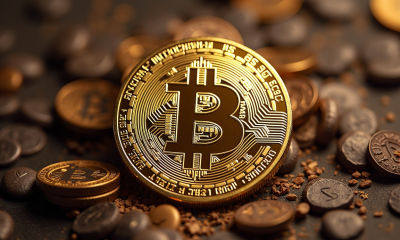
 Cryptocurrency1 week ago
Cryptocurrency1 week agoBitcoin’s rare September gains defy history: Data predicts a 50% Q4 rally to 170,000 dollars – Crypto News
-

 Technology1 week ago
Technology1 week agoWhich ChatGPT features are restricted under parental controls introduced by OpenAI? – Crypto News
-
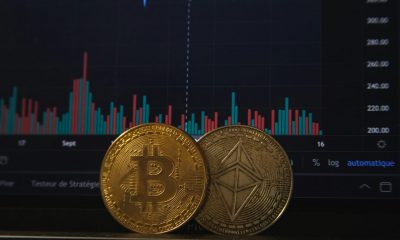
 Technology1 week ago
Technology1 week agoUS SEC weighs tokenised stock trading on crypto exchanges – Crypto News
-

 Blockchain1 week ago
Blockchain1 week agoWatch These Key Bitcoin Metrics as BTC Price Prepares for ‘Big Move’ – Crypto News
-

 Cryptocurrency1 week ago
Cryptocurrency1 week agoXPL, Not XRP: Why Are Whales Shoveling Ripple’s Rival? – Crypto News
-

 Technology1 week ago
Technology1 week agoCAKE eyes 60% rally as PancakeSwap hits $772B trading all-time high – Crypto News
-

 Technology1 week ago
Technology1 week agoNasdaq-listed Helius Medical Technologies rebrands as Solana Company – Crypto News
-

 Cryptocurrency1 week ago
Cryptocurrency1 week agoCrypto Market Prediction: Shiba Inu (SHIB) Moon Landing, Dogecoin (DOGE) Trapped in $0.23, XRP: Most Important Event for $3 – Crypto News
-
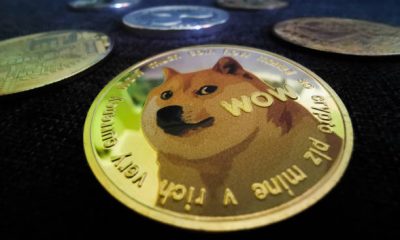
 Blockchain1 week ago
Blockchain1 week agoThe Bullish Pattern That Suggests New Highs – Crypto News
-
others1 week ago
Japan Industrial Production (YoY) declined to -1.3% in August from previous -0.4% – Crypto News
-

 Blockchain1 week ago
Blockchain1 week agoTrump Pulls Brian Quintenz Nomination for CFTC – Crypto News
-
Technology1 week ago
Breaking: BNB Chain Account Hacked With Founder CZ Shown Promoting Meme Coin – Crypto News
-
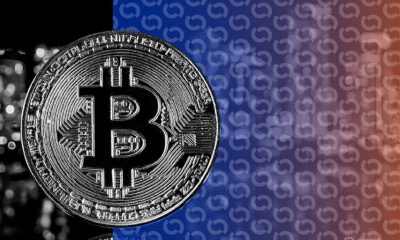
 Cryptocurrency1 week ago
Cryptocurrency1 week agoBitcoin Bounces as Crypto Market Turns Green: Where Do Prices Go Next? – Crypto News
-

 Technology1 week ago
Technology1 week agoFTT price on the edge as FTX creditors brace for $1.6B payout on Sept. 30 – Crypto News
-
Cryptocurrency1 week ago
BREAKING: BlackRock Amends Bitcoin ETF (IBIT), Ethereum ETF (ETHA) Amid New Milestone – Crypto News
-

 Technology1 week ago
Technology1 week agoiQOO 15 key specifications leaked ahead of launch: Here’s what to expect – Crypto News
-
others1 week ago
Japan Tankan Large All Industry Capex climbed from previous 11.5% to 12.5% in 3Q – Crypto News
-

 De-fi1 week ago
De-fi1 week agoCrypto Market Slips as U.S. Government Shutdown Looms – Crypto News
-

 De-fi1 week ago
De-fi1 week agoAndre Cronje’s Flying Tulip Raises $200 Million Ahead of ICO – Crypto News
-

 others1 week ago
others1 week agoEUR/GBP supported by dovish BoE tone and persistent UK fiscal headwinds – Crypto News
-
Business1 week ago
Legal Expert Breaks Down XRP’s Appeal as Ripple SWIFT Debate Heats Up – Crypto News
-
Technology1 week ago
SEC Chair Paul Atkins Says Crypto Is Top Priority At SEC CFTC Roundtable – Crypto News
-

 Cryptocurrency1 week ago
Cryptocurrency1 week agoHorizen (ZEN) gains 12% to break above $7 – Crypto News
-

 Technology1 week ago
Technology1 week agoAltcoins today: Perpetual tokens shed over $1.3B as ASTER, AVNT, and APEX tumble – Crypto News
-

 De-fi1 week ago
De-fi1 week agoHyperliquid’s Hypurr NFTs Settle at $55,000 Floor Amid Ecosystem Expansion – Crypto News
-
Business1 week ago
Crypto Stakeholders Push Back as Banks Seek Yield Ban Provision in CLARITY Act – Crypto News
-

 Technology1 week ago
Technology1 week agoGoogle Nano Banana trend: 50 AI prompts to transform men’s selfies into retro-golden Durga Puja portraits – Crypto News
-

 Metaverse1 week ago
Metaverse1 week agoWho is Alexandr Wang? Meta AI chief and 28-year-old billionaire urges teens to spend ‘all their time’ on this activity – Crypto News
-

 Technology1 week ago
Technology1 week agoChainlink and Swift allow banks to access blockchain through existing systems – Crypto News
-
others1 week ago
Japan Foreign Investment in Japan Stocks rose from previous ¥-1747.5B to ¥-963.3B in September 26 – Crypto News
-
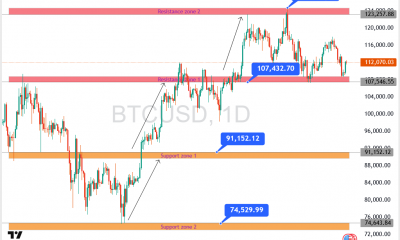
 Cryptocurrency1 week ago
Cryptocurrency1 week agoBitcoin Climbs Above $112K, But $125K Resistance Looms Large – Crypto News
-

 Cryptocurrency1 week ago
Cryptocurrency1 week agoEthereum whales return to the market: Is ETH ready for $10K? – Crypto News
-

 De-fi1 week ago
De-fi1 week agoCrypto Market Edges Up as Investors Weigh Fed Moves and Government Shutdown Risks – Crypto News
-
others1 week ago
New Zealand ANZ Business Confidence fell from previous 49.7 to 49.6 in September – Crypto News
-

 Blockchain1 week ago
Blockchain1 week agoDX Terminal Tops NFT Sales Count in September as Base Dominates Top 10 – Crypto News
-

 Blockchain1 week ago
Blockchain1 week agoDX Terminal Tops NFT Sales Count in September as Base Dominates Top 10 – Crypto News
-

 Blockchain1 week ago
Blockchain1 week agoEthereum Founder Dumps Billions In These Meme Coins, Is This A Repeat Of Shiba Inu In 2021? – Crypto News
-
Technology1 week ago
Breaking: SEC Moves To Allow On-Chain Stock Trading Alongside Crypto Amid Tokenization Push – Crypto News
-
Business1 week ago
SUI Price Eyes $4.5 as Coinbase Futures Listing Sparks Market Optimism – Crypto News
-

 De-fi1 week ago
De-fi1 week agoBitcoin Split Over Proposed Upgrade That Could Censor Transactions – Crypto News




